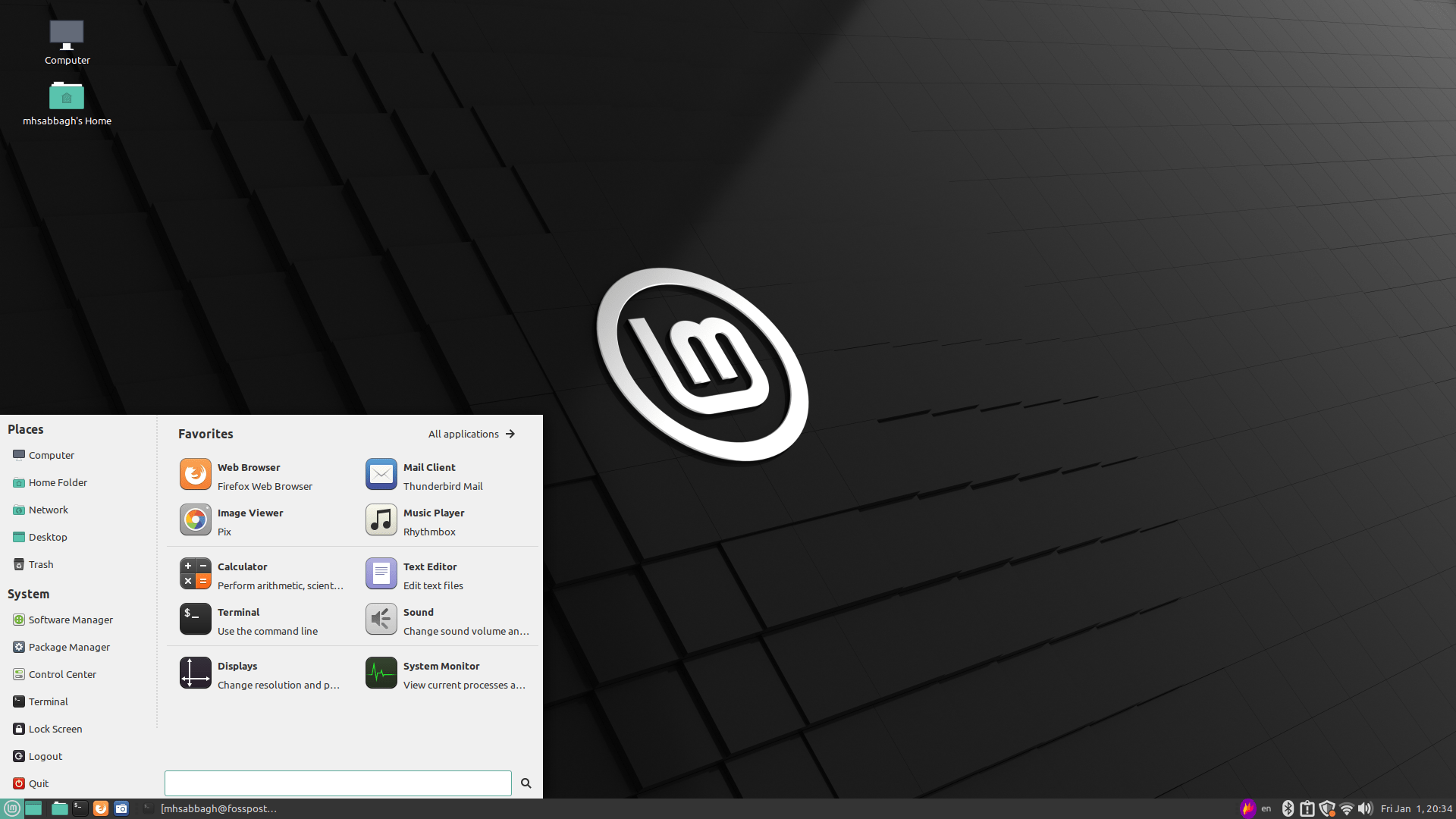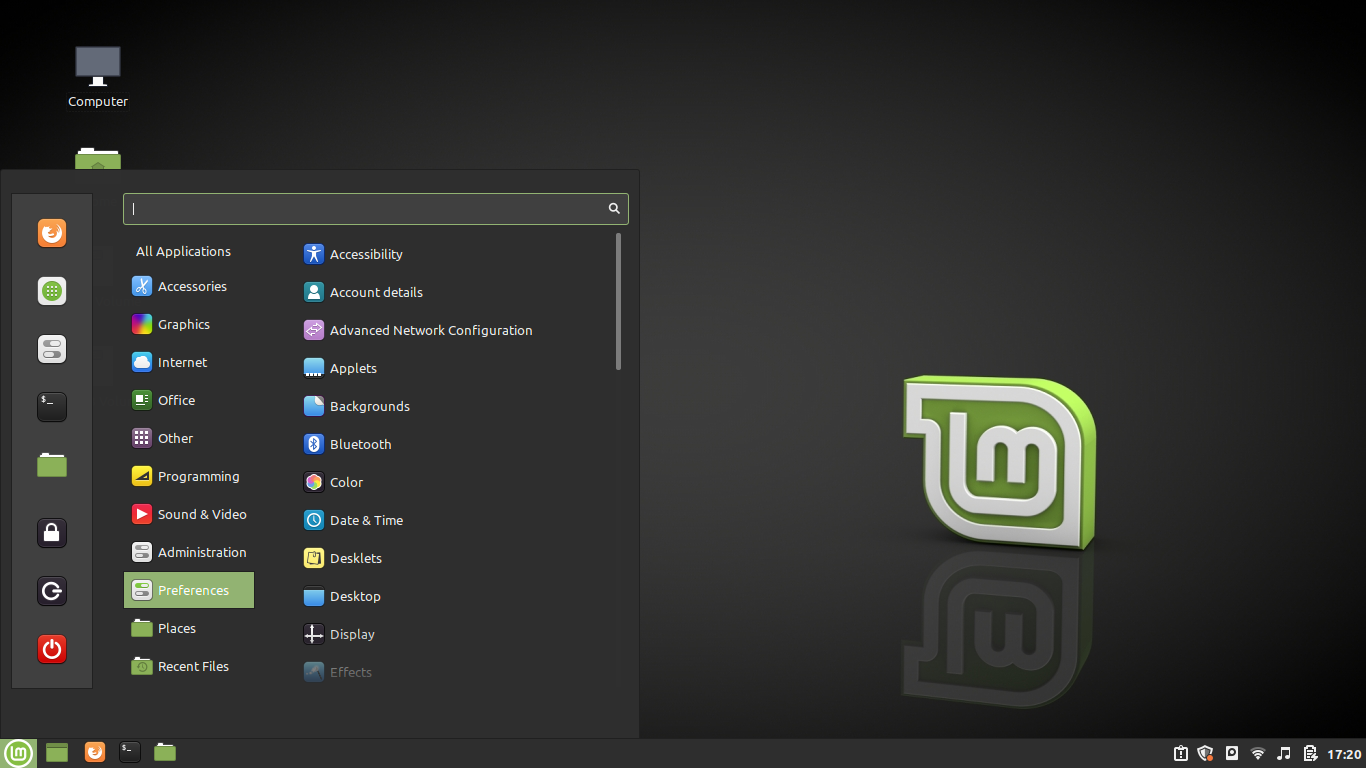

Linux Mint also allows the networking ports to be closed using firewall, with availability of customized port selection.
#LINUX MINT SOFTWARE#
Other software which isn’t installed by default can be easily downloaded using Linux Mint’s package manager.
#LINUX MINT CODE#
Linux Mint develops actively software for its operating system and the most of development is done in Python and you find the source code available on GitHub.
#LINUX MINT FREE#
Linux Mint’s inclusion of the proprietary software is unusual at all as some Linux distributions don’t include the proprietary software by default because the common goal for the Linux distributions is to adhere to model of the free and open-source software.Linux Mint utilizes primarily the free and open-source software, which is making exceptions for few proprietary software, including plug-ins and codecs which provide MP3, Adobe Flash, and also DVD playback.When Betsy was released, all LMDE users could be automatically upgraded to the new versions of the MintTools software and the new Desktop Environments before even they were released into main edition of the Linux Mint. It is LTS release based on the Debian Jessie. New version of Linux Mint Debian Edition called Linux Mint Debian Edition 2 “Betsy”. On May 2015, Linux Mint team decided to no longer support original rolling release version of Linux Mint Debian Edition after January 2016. Regardless other Ubuntu-based editions, Linux Mint Debian Edition was originally rolling release based on Debian directly and wasn’t tied to the Ubuntu packages or even its release schedule. In 2010, Linux Mint released the LMDE (Linux Mint Debian Edition). Starting with version 6 “Felicia” each release was now completely using the latest Ubuntu release, built from it directly, and timed for about one month following the corresponding Ubuntu release. For increasing the compatibility between the 2 systems, Linux Mint made a decision to abandon its code-base and also changed the way built its releases. Linux Mint in 2008 adopted precisely the same release cycle as Ubuntu and dropped its minor version number before releasing the version 5 “Elyssa”. Linux Mint had some users from those early versions till the “Cassandra” release version 3.0. After that another release, “Barbara”, as version 2.0 was first version which used Ubuntu as codebase using its package repositories. Linux Mint started in 2006 based on Kubuntu, with name “Ada” as version 1.0.
#LINUX MINT UPDATE#
The most recent update is named “Rafaela”, and it was released on June 30, 2015. Basically, all the new version releases could be based on the Ubuntu’s LTS release, and all Point releases could be based on existing LTS’s source code. Linux Mint software developers decided that after Qiana, all the subsequent versions should use source-code of current LTS release of Linux Mint till Ubuntu releases a new LTS release. The 17th version was released in 2014 and named “Qiana” which was another long-term-support release (LTS).

First release was in 2006 and named “Ada”.

#LINUX MINT FULL#
Linux Mint provides full multimedia support that is out-of-the-box by including proprietary software like Adobe Flash.Īt the first new versions of Ubuntu-based Linux Mint were released about every 6 months. Linux Mint is distribution based on the Debian and Ubuntu operating systems, with alternative LMDE (Linux Mint Debian Edition) based purely on the Debian. Practically, that meant focusing on incorporating user feedback, ease of use, and also choosing pleasant color layouts and schemes. Clement is one of the software developers who are notoriously reluctant and reclusive to give interviews but at the same time, he has stressed repeatedly that he has an aim to modify Ubuntu and achieve elegance to it. Linux Mint was mainly developed and released by Clement Lefebvre in France in 2006.


 0 kommentar(er)
0 kommentar(er)
